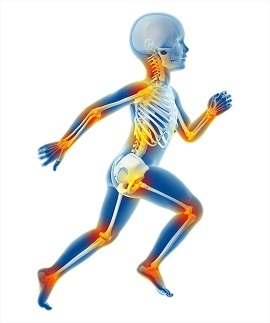
What are Common Childhood Injuries?
Children are prone to injuries as they are curious to experiment or explore without considering the risks involved. According to statistics, 45% of childhood injuries sustained during playground activities are of a serious nature (fractures, dislocations, and concussions). Some of the common childhood injuries requiring prompt medical attention include:
- Head injuries
- Mouth/tooth injuries
- Eye injuries
- Bone fractures
Causes of Childhood Injuries
Some of the most common causes of childhood injuries include:
- Motor vehicle accidents
- Falls from stairs, beds, highchairs, slippery floors, windows, play equipment, etc
- Fire and burns such as electrical burns and shock; flames from stoves, matches, lamps, house fires; touching hot surfaces; hot liquid and steam injuries, etc
- Assault
- Sport injuries
- Road accidents
- Bicycle accidents
Signs and Symptoms of Childhood Injuries
Some of the signs and symptoms of childhood injuries include:
- Swelling
- Redness
- Bruises
- Pain
- Inability to bear weight, walk, or use a limb
- Scrapes and cuts
- Sprains and strains
- Numbness
Treatment of Childhood Injuries
Physical activities and sports help children stay physically fit and healthy, but they can also result in injuries. Some of the treatments associated with childhood injuries include:
- Pain relievers as recommended by a doctor
- Antiseptic treatment
- Antibiotic ointments
- Rest and elevation of the injured limb
- Icing of the injured area
- Compression through splints or bandage to decrease swelling
- Assistive devices such as slings and braces
- Surgical intervention and hospitalization
Prevention of Childhood Injuries
Childhood injuries are part of the growing up process in a child and hence difficult to avoid, but you can take precautions to lower the risk. Some of the measures employed to prevent childhood injuries include:
- Conditioning and strengthening of muscles
- Stretching exercises to increase flexibility
- Drinking plenty of fluids to prevent dehydration
- Taking breaks during play and sports activities to avoid injuries related to fatigue
- Wearing protective equipment like neck, shoulder, chest, elbow, knee and shin pads during sports activities
- Wearing clothing suitable to the weather condition
- Stopping high-intensity activities during extreme weather condition
- Installing guard rails, window guards, stair gates to prevent falls
- Choosing age-appropriate playgrounds or activities.






